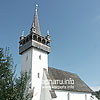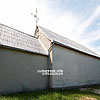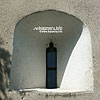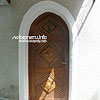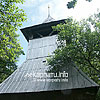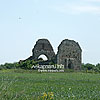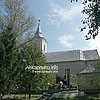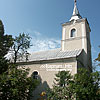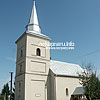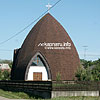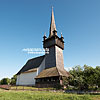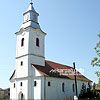Berehove district
Situated in the south-west of Transcarpathian region within the boundaries of Transcarpathian lowland, the district is characterized by mostly flat terrain which merges in the south into the Carpathians. There are also some separate slight elevations across the district. Through the territory run rivers Tysa, Borzhava, Verke (Vyrka). In the place of the big bog Chornyi Mochar, the drainage of which began in far 1878, reservoir and pond cascade are situated where common carp, crucian carp, and grass carp are being bred.
Berehove district is the only district of Transcarpathian region where there are so many hot mineral water wells with high iron content, which is due to the fact that it is situated in a seismic zone. Since it is the hottest spot in the region, it is characterized by frequent active underground processes: tectonic plates move and cause the formation of geysers. As of today, seven wells have been explored; however, the baths were built only at two of them. In Berehove there are thermal springs of silico-nitro-bicarbonate-sodium chloride waters of high mineralisation, the analogs of which can be found in Kamchatka, Sakhalin, Iceland and New Zealand. Compositionally, thermal springs near Koson village belong to hyperthermal sodium chloride waters of medium mineralization. They are similar to the waters of the world-famous Hungarian spa Hajdúszoboszló.
The district is covered by dense highway network and is crossed by the railway line Chop-Batiovo-Vynohradiv.
It borders on Hungary in the south and south-west.Its administrative centre is Berehove town.
The district’s territory has been inhabited since ancient times. Lots of campsites were discovered there, the oldest of which are more than 12 thousand years old. Until the arrival of Hungarian tribes in the 10th century, the territory had been inhabited by Slavic tribes. Hungarians founded lots of new fortified settlements, amongst which — the 11th-century Lampertsas, which was later renamed Beregszász (now Berehove). In 1241 the district’s territory was devastated by Batu Khan’s horde. At the beginning of the 18th century Berehove district became one of the centres of the Hungarian War of Independence led by Francis II Rákóczi against the Habsburgs. After the defeat of the rebellion in 1711, the city became the property of Austrian Count Schönborn-Buchheim. In those days, the population’s primary occupations were farming and wine growing. After the WWI, the district’s territory along with whole Transcarpathia was annexed to Czechoslovakia. In 1937, Hungarian troops occupied the territory of Berehove district. In October, 1944, the district’s territory was liberated by the Soviet army. In 1946, Berehove okrug was created, with the centre in Berehove. In 1953 Berehove district was formed.
Traditional folkcraft such as pottery (Berehove) and wood carving (Berehove, Vary) survived in Berehovo district till nowadays. Annually, such events as the festival “Berehove Days”, wine festival, autumn festival “Golden Fall”, and grape and apple balls are being held.
Berehove district is the most famous for its wine. Local winemakers maintain that there are the most favourable soils and microclimate for growing grape vines. Even in far 1342, Hungarian king ordered that the inhabitants of Berehove (then Lampertsas) annually deliver to Mukachevo 10 barrels of wine. During the lean years, the winemakers of the world-famous Tokaj wine region frequently purchased wine in Berehove district. At the first wine trade show in 1880 in Kosice (now Slovakia), Berehove winemakers were awarded with 2 gold and 15 silver medals. In modern local restaurants and verdant farmsteads you’ll be treated not only to wine, but also to palenka, local vodka, which is often made from fruit.
Berehove district is one of the few regions in Ukraine where there survived quite a lot of late Romanesque and Gothic architecture monuments that remained almost unchanged in the course of later reconstruction.
Since the major part of the district’s population is Hungarians (67.7%), travelling in Berehove district may feel like abroad, in a way. Hungarian language environment, traditions and architecture prevail here. So, don’t forget your Hungarian phrasebook — you’ll certainly need it to buy something, to make order in a restaurant, to ask for directions or just to be able to read the inscription on some plaque or street sign.
- Architectural ensemble “Grafskyi Dvir” (The Count’s Yard): Prince Bethlen Palace, carriage house and granary, stable (1629) — 1 Bethlen Street, Berehove
- Catholic Church (13th-15th c.) — 30 Sándor Petőfi Street, Berehove
- Catholic Church (13th-19th c.) — Tinódi Street, Berehove
- Catholic Church (14th c.) in Dobrosilia village
- Catholic Church (13th-14th c.) in Zmiivka village
- Castle ruins (12th-13th c.) in Kvasovo village
- The ruins of St. John the Baptist Catholic Church (1117-16th c.) in Muzhieve village
- Reformed Church with bell tower (1753) in Chetovo village
 Important information:
Important information:

 Ukraine
Ukraine Poland
Poland Slovakia
Slovakia
 Українською
Українською